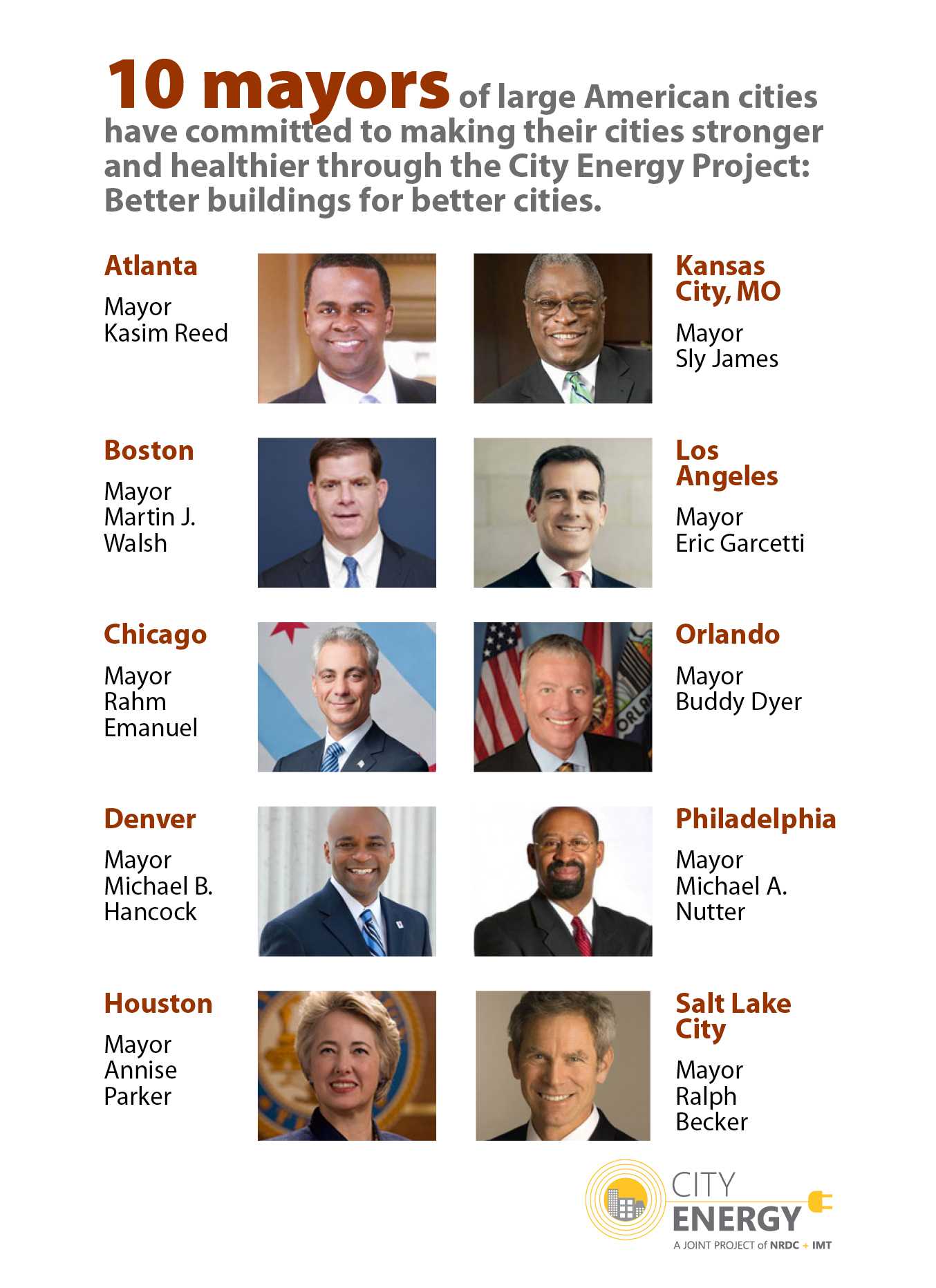Announcing the City Energy Project
Here at IMT, our mission is to promote energy efficiency in buildings–a mission we tackle on several fronts, with different strategies. We promote policies, building codes, and financial innovations that can move the market toward energy efficiency, with the end goal of all buildings being high-performance.
More and more in recent years, we have found ourselves working hand-in-hand with cities on energy efficiency policy. This is for a few reasons. Obviously, cities have a high concentration of buildings, especially large buildings that account for a big share of our country’s energy use. Mayors and city governments are showing great leadership on sustainability, and many have set aggressive goals to lower their energy use and climate-change emissions.
They’re not waiting for state or federal action–they want to act now to make their cities stronger, healthier, and more prosperous through energy efficiency in the built environment.
So we are thrilled to be able to help more cities take action. Yesterday, IMT and the Natural Resources Defense Council (NRDC) announced the City Energy Project, a multiyear partnership between our two nonprofit groups and 10 leading American cities. Working together, the City Energy Project and participating cities will ramp up energy efficiency in their communities’ buildings, cutting expensive energy waste and reducing harmful carbon pollution.
The 10 City Energy Project cities are: Atlanta, Boston, Chicago, Denver, Houston, Kansas City, Mo., Los Angeles, Orlando, Philadelphia, and Salt Lake City.
Their united effort is expected to lower energy bills by nearly $1 billion annually, and could cut as much climate change pollution as generated by more than 1 million passenger vehicles every year.

"The City Energy Project is a promising opportunity and partnership for the City of Chicago as we work to become a more energy-efficient city," said Chicago Mayor Rahm Emanuel. "More energy efficiency means new jobs and continued economic growth, and a more sustainable city, which will lead to a further increase in the quality of life for the people of Chicago."
With the Project’s help, the 10 cities will craft their own customized energy efficiency plans, and each will receive the support of a local expert who can help put the city’s plan into practice.
The cities have a lot of work ahead, and so do we–but as we roll up our sleeves, let’s acknowledge how important their commitment is. Buildings account for almost 40 percent of America’s total energy use and carbon emissions. Energy efficiency is widely regarded as the world’s "first fuel," and the firm McKinsey found that investing in buildings’ efficiency could unlock $1.2 trillion in savings. Green and energy-efficient buildings are healthier for occupants and more valuable in the marketplace. So why aren’t we all doing more to capture this potential?
The short answer is that real barriers inhibit efficiency, barriers like lack of information, misaligned incentives, and upfront costs. Only a coordinated effort by major cities and the private sector can knock down these barriers. That’s where the City Energy Project comes in. It will give city leaders and the real estate industry the support they need to make buildings better, improving the lives of millions of urban residents.
We invite you to visit the City Energy Project website to learn more. As the Project gets underway, we’ll keep you posted on the cities’ achievements. Today, we applaud the mayors for committing to make their cities more sustainable and more resilient. They are pioneering strategies that will shape energy efficiency initiatives in communities around the country, and perhaps around the world, for many years to come.
